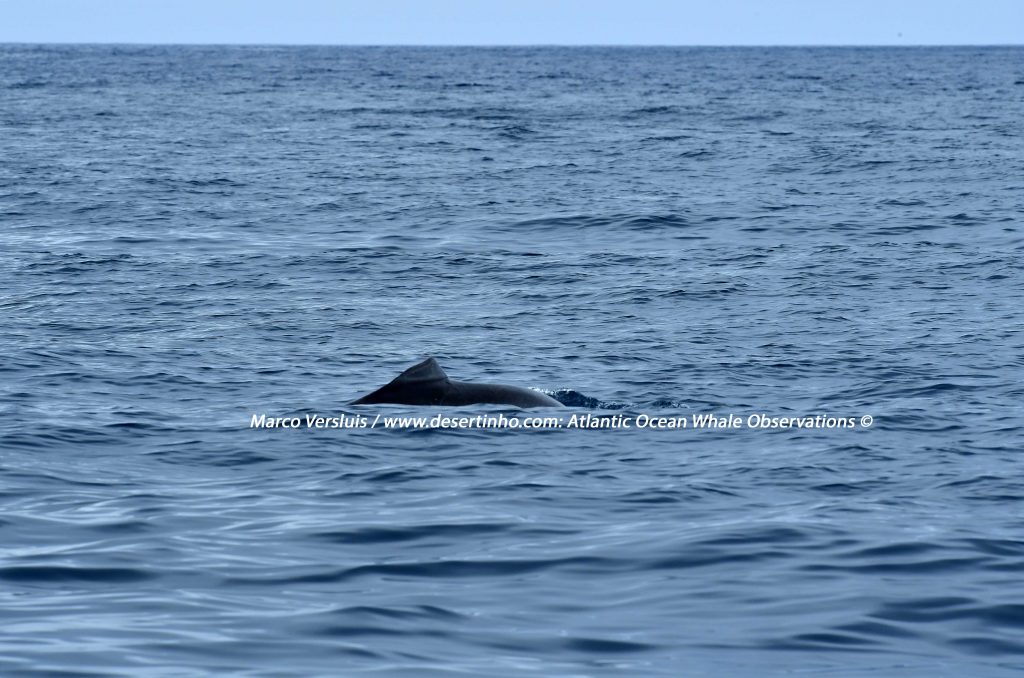Desertinho Atlantic Whale observations works for several years on international Whale Photo-ID projects. We share our data, and information, with other Whale Photo-ID compagnies worldwide. This chapter is about several Atlantic dolphin species like the: Spotted dolphin, Striped dolphin, Bottlenose dolphin, Common dolphin, Risso’s dolphin, and the Pilot whale. All these dolphin species are studied by me for 10 years. And all these dolphins give me lots of information about their migration routes, age, behaviour, and feeding patterns.
For the “Dolphin Photo-ID” project I take a closer look at all kind of specific facts like: Scars, other typical markings on their body, and behaviour to identify them. In this case it’s about an Atlantic bottlenose dolphin without dorsal fin which he possibly lost when he was struck by a ships propellor. This Atlantic bottlenose dolphin, as you can see on the photo below, travells within a group of Atlantic bottlenose dolphins and has no problems at all to swim, to feed, and to socialize with them. From reliable resources it’s confirmed that this specific dolphin travells around all the islands of the Acores together with it’s family. This Atlantic bottlenose dolphin is very important for me to have seen and he is easy to recognize because of its specific loss of it’s dorsal fin.
Desertinho Atlantic Whale observations werkt diverse jaren mee aan Whale Photo-ID projecten. Wij delen onze data, en informatie, met walvis onderzoekers wereldwijd. Deze pagina gaat over Atlantische dolfijn soorten zoals: de Gevlekte dolfijn, gestreepte dolfijn, Tuimelaar, Gewone dolfijn, grijze dolfijn, en de griend. Al deze dolfijnen soorten worden door mij opgenomen in mijn “Dolphin Photo-ID” project. Dolfijnen geven een goed beeld over de status van de Oceaan en deze waarnemingen geven mij dan ook veel waardevolle informatie voor het onderzoek naar hun migratie routes, leeftijd, gedrag en voeding patronen.
Voor mijn “Dolphin Photo-ID” project kijk ik naar bijzondere kenmerken zoals: Littekens, gedrag, en andere bijzondere specifieke kenmerken om ze kunnen identificeren. In dit geval gaat het om een Atlantische tuimelaar zonder rugvin wat waarschijnlijk is veroorzaakt door een scheepsschroef of heel scherp vislijn. Deze Atlantische tuimelaar, zoals je kunt zien op de foto hierboven, maakt ondanks deze handicap gewoon deel van een pod Atlantische tuimelaars en kan hij gewoon met hun meekomen. Vanuit betrouwbare bron is mij bevestigd dat deze Atlantische tuimelaar, samen met zijn familie, regelmatig rondreist langs de diverse eilanden van de Azoren. Tot slot was het voor mij een uniek moment om deze foto van hem te kunnen maken en is hij gemakkelijk te herkennen aan zijn bijzondere rugvin ..die er niet meer is.
